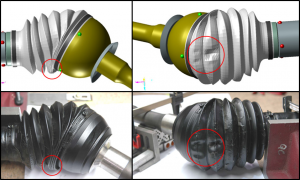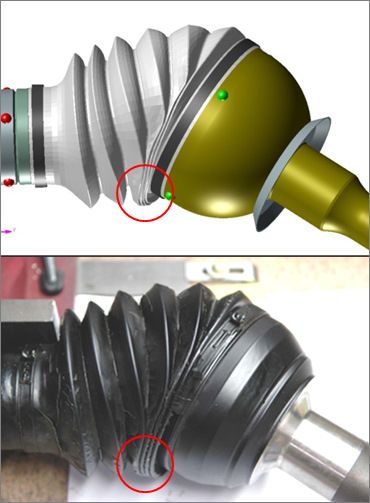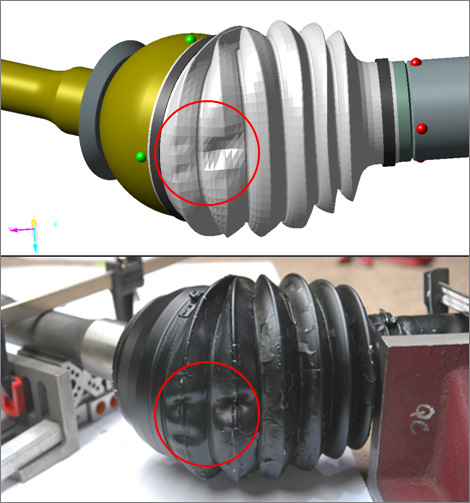RecurDyn Simulations Guide Engineers to Improved CV Joint Boot Designs

The Mistequay Group, a manufacturer of Constant Velocity (CV) joints had a client request a half-shaft that could operate at an increased transmission angle, but the existing boot for the CV joint was already at its operating limit, exhibiting reduced product life at higher transmission angles. Traditional Finite Element Analysis (FEA) was not sufficient for modeling the flexible CV boot in motion because it undergoes complex nonlinear deformation during the combined rotation and bending of the CV joint, and it also makes contact with itself and potentially other half-shaft components during the motion. Because of this, the manufacturer contacted us to apply the best available technology to understand boot behavior and to provide a solution.
RecurDyn (with the FFlex module) was used to model the existing flexible boot as well as multiple new designs, performing the following steps:
- Created a MFBD model that consists of a rigid CV joint model and a flexible boot.
- Configured the boot into its installation position with respect to the bell and driveshaft.
- Defined flexible body contacts between the folds of the boots and other locations (including Self-contact).
- Ran the simulations through transmission angles and rotational speeds of interest.
Customer benefits realized:
- RecurDyn could correctly recreate the behavior of the existing design (see images/animations below).
- The new boot design does not exhibit the problematic dimpling effect found in the existing design (see images/animations below).
- Simulation results provided additional guidance for further design improvements for the new boot.
The images and videos below demonstrate the high fidelity of the simulations (shown is the previously existing boot design).

Figure 1: RecurDyn correctly validated the number of collapsed folds.

Figure 2: RecurDyn correctly validated the formation of dimples. Animations of the boot gave the engineers insight into the dynamic formation of these dimples.
Video 1: RecurDyn correctly captures the overall shape of the flexible boot as the CV joint bends and rotates.
Video 2: RecurDyn captures with high fidelity the problematic dimpling effect seen on several folds.
Video 3: RecurDyn displays stress contour plots within the boot to help identify areas of high stress.
